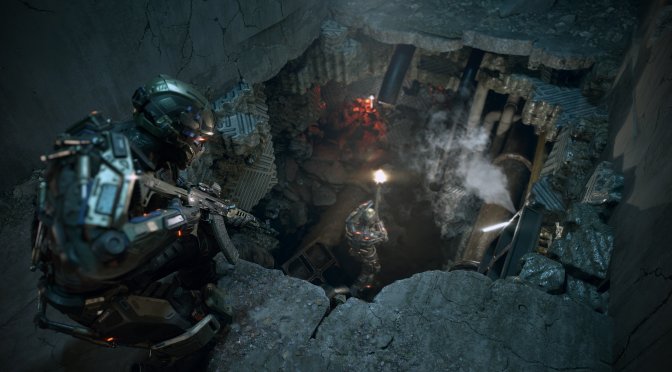In an interview with WCCFTech, Reburn shared some new tech details about its upcoming futuristic sci-fi shooter, La Quimera. According to the devs, the game is powered by Unreal Engine 4 and it won’t support Ray Tracing.
As the devs told WCCFTech:
“We’re genuinely excited about the potential of DirectX Raytracing 1.2 and neural rendering. While La Quimera doesn’t currently use real-time ray tracing due to our priority towards achieving strong performance across a wide range of hardware, we do utilize raytracing during the asset creation process to enhance visual quality.”
The good news here is that the game should run better since it uses traditional rasterized techniques. Reburn stated that it has created a custom solution for global (indirect) lighting instead of real-time ray tracing. This gave them better performance, broader hardware compatibility, and more efficient data storage, while keeping a strong level of visuals.
Reburn also claimed that La Quimera will support DLSS and FSR. However, the game does not support their latest versions. So, we could be looking at DLSS 3 and FSR 3.0? If so, NVIDIA and AMD will have to test the game so that they can greenlight it for DLSS 4 and FSR 4.0. Otherwise, we’re most likely looking at DLSS 2 and FSR 2.0 support for launch.
La Quimera is a narrative-driven first-person-shooter game that will release on April 25th. The devs haven’t shared the game’s PC requirements as of yet. Naturally, though, we’ll be sure to share them once they become available.
La Quimera feels like a weird mix of Crysis, Killzone and Metro. This game is being made by ex Metro devs. So, I’m really looking forward to it. Especially since this will be a story-driven title. According to Steam, there will also be co-op online. So, you can play it in solo mode, or with up to two friends.
Stay tuned for more!

John is the founder and Editor in Chief at DSOGaming. He is a PC gaming fan and highly supports the modding and indie communities. Before creating DSOGaming, John worked on numerous gaming websites. While he is a die-hard PC gamer, his gaming roots can be found on consoles. John loved – and still does – the 16-bit consoles, and considers SNES to be one of the best consoles. Still, the PC platform won him over consoles. That was mainly due to 3DFX and its iconic dedicated 3D accelerator graphics card, Voodoo 2. John has also written a higher degree thesis on the “The Evolution of PC graphics cards.”
Contact: Email

